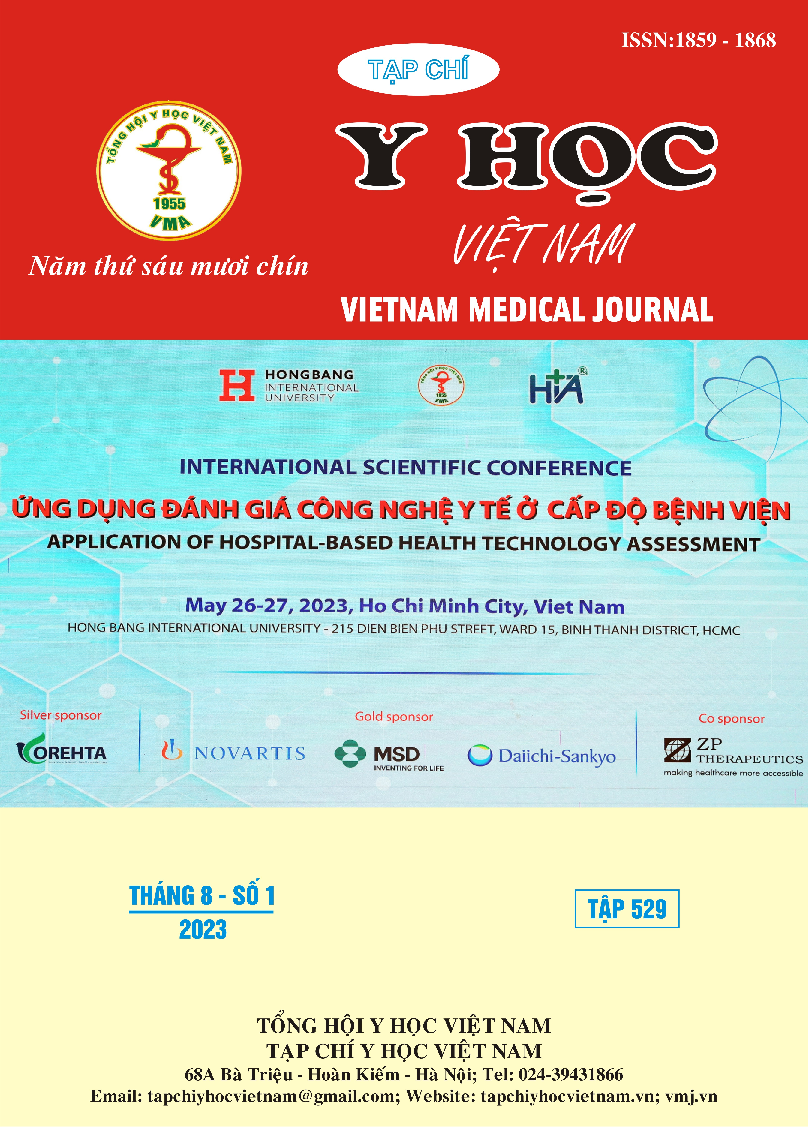KNOWLEDGE OF MOTHERS TAKING CARE OF NEWBORN JAUNDICED INFANTS WITH INDIRECT INCREASED BILIRUBIN IN NEONATOLOGY DEPARTMENT - VINMEC TIMES CITY INTERNATIONAL GENERAL HOSPITAL IN 2022-2023
Main Article Content
Abstract
Objective: To describe the knowledge of mothers taking care of newborn jaundiced infants with indirect increased bilirubin in neonatology department - Vinmec Times City International General Hospital in 2022-2023. Methods: Descriptive study, using a toolkit to assess mothers' knowledge about neonatal jaundice. Results: The average age of mothers was 29.8, most mothers had university or college degrees (85.4%), mothers lived mainly in urban areas (94.9 %). The percentage of mothers with correct knowledge about the danger of neonatal jaundice was 25.5%; 47.1% of mothers had incorrect knowledge about the type of light that helps identify babies with jaundice. 29.3% of mothers did not have the correct knowledge about body parts to help observe the jaundiced baby or not; 65.6% had correct knowledge about the danger level of newborn with severe jaundice. 21.0% of mothers did not have the correct knowledge on how to prevent neonatal jaundice in their babies. 65.0% of mothers had incorrect knowledge about the causes of neonatal jaundice. The percentage of mothers with good knowledge about neonatal jaundice was 33.8%; knowledge was 38.2% and average knowledge was 28.0%. Conclusion: Knowledge about recognizing jaundice in babies, how to prevent neonatal jaundice as well as signs and dangers of jaundice Neonatal jaundice of mothers were limited, it is necessary to further strengthen educational measures for mothers to take care of children's health in general and newborn care in particular, including neonatal jaundice.
Article Details
Keywords
Knowledge, jaundice, newborn, indirect bilirubin, care.
References
2. N. B. Hoàng, "Đặc điểm lâm sàng, cận lâm sàng và đánh giá sự phát triển ở trẻ sơ sinh đủ tháng vàng da phải thay máu: Luận án Tiến sỹ Y học chuyên ngành Nhi khoa," (in vi), 2015.
3. Đ. M. Tuyết, "Đánh giá kết quả điều trị vàng da tăng Bilirubin tự do ở trẻ sơ sinh bằng liệu pháp ánh sáng tại khoa nhi bệnh viện Đa khoa Trung Ương Thái Nguyên," Đại học Y Dược, 2009.
4. M. Adib-Hajbaghery and Z. Khosrojerdi, "Knowledge of mothers about post-discharge newcborn care," (in eng), vol. 4, no. 2, pp. 33-41, 2017.
5. N. T. Bông, "Kiến thức, thái độ, thực hành của bà mẹ chăm sóc trẻ sơ sinh vàng da và một số yếu tố liên quan tại khoa nhi bệnh viện Bạch Mai," Thạc sỹ, Nhi, Đại học Y Hà Nội, Hà Nội, 2021.
6. V. T. Tiến and T. V. Trầm, "Kiến thức thái độ thực hành về vàng da của các bà mẹ có con bị vàng da sơ sinh điều trị tại khoa nhi bệnh viện đa khoa Tiền Giang," (in vi), Y học thành phố Hồ Chí Minh, vol. 14, no. 4, pp. 261-265, 2010.
7. K. H. Amegan-Aho, C. I. Segbefia, N. D. O. Glover, G. A. Ansa, and T. J. Afaa, "Neonatal Jaundice: awareness, perception and preventive practices in expectant mothers," (in eng), Ghana medical journal, vol. 53, no. 4, pp. 267-272, 2019.
8. Đ. T. Hoà, N. T. T. Hương, N. T. T. Dương, and N. T. Lĩnh, "Thay đổi thái độ của bà mẹ về chăm sóc trẻ vàng da sơ sinh tại Bệnh viện Phụ sản tỉnh Nam Định sau can thiệp giáo dục," (in vi), Tạp chí Khoa học Điều dưỡng, vol. 2, no. 2, pp. 38-43, 2019.


